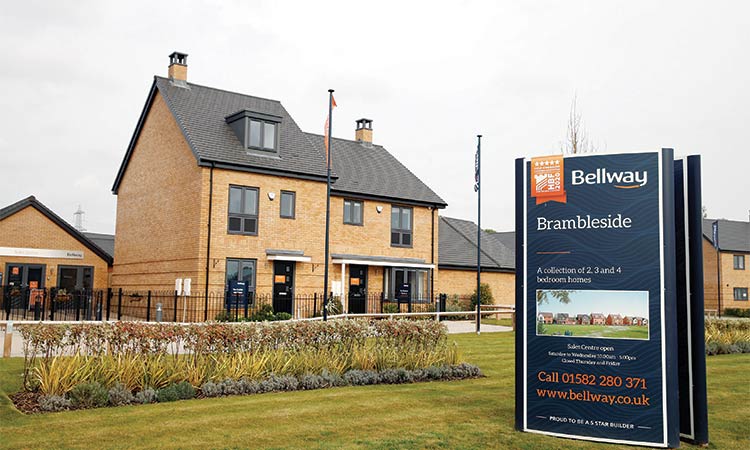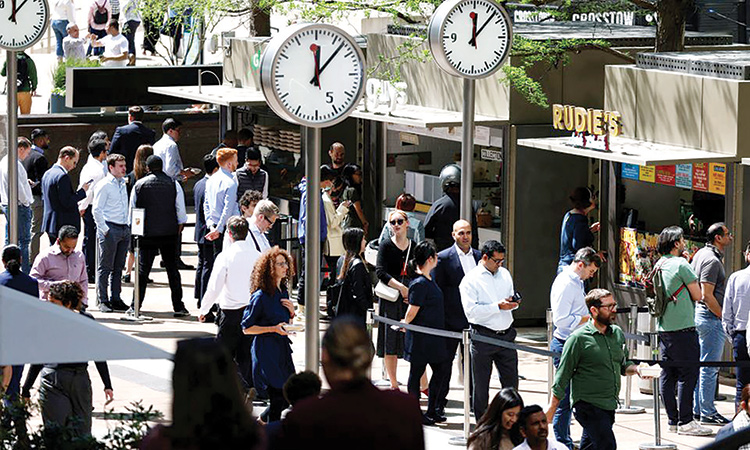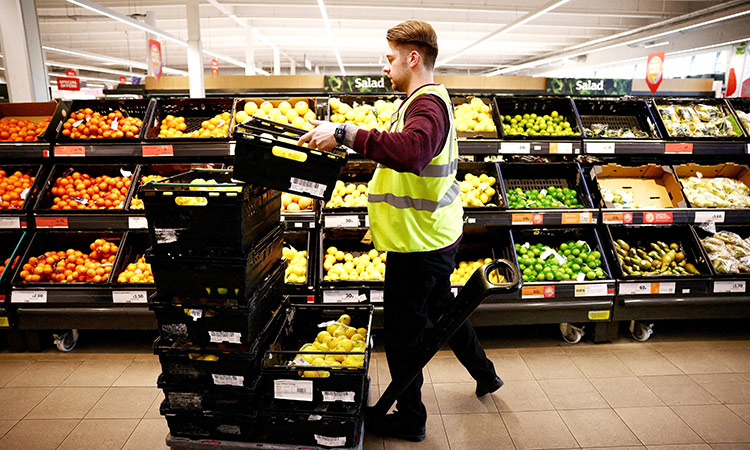UK house purchases reached near pre-pandemic levels last month

Buildings at a housing development site in Dunstable, UK. Reuters
The figures highlight the uneven nature of Britain’s economic recovery from the COVID pandemic, with retail sales volumes now above pre-crisis levels but the outlook for jobs, investment and much of the hospitality industry still bleak.
Provisional tax data showed 98,010 house purchases in September, up from 80,790 in August and just below the number of sales recorded in February on a seasonally adjusted basis.
Compared with a year earlier, sales are down 0.7%.
The Bank of England estimates the overall economy at the end of September was still around 9% smaller than before the crisis, compared with a 20% quarterly hit during lockdown.
Britain’s housing market had been showing increased momentum at the start of the year, before sales collapsed in April.
The release of pent-up demand when the lockdown ended was further fuelled by a temporary cut in stamp duty land tax in July, which Britain’s finance ministry said would help support jobs elsewhere in the economy.
“This ranges from carpenters to cleaners, brickies and decorators, they can all benefit from each sale,” Finance Minister Rishi Sunak said on Wednesday.
Official data for August showed average house prices were 2.5% higher than a year earlier, roughly in line with the growth rates before the pandemic.
The Office for National Statistics said this price data was largely based on transactions agreed before the tax cut, and a price index from mortgage lender Halifax reported a 7.3% annual rise in September, the biggest increase since 2016.
Lenders and real estate agents have also reported a shift in demand away from London and other large urban centres towards roomier rural or suburban property, in response to greater home working since the lockdown.
However, the ONS data showed prices in London rose faster than those in most other parts of Britain, up by 3.5% in the year to August.
Meanwhile, Britain’s government borrowing in the first half of the financial year was more than six times higher than before the COVID pandemic, official figures showed on Wednesday, taking public debt to its highest since 1960.
Public borrowing in September alone totalled 36.101 billion pounds ($46.90 billion), above all forecasts in a Reuters poll of economists, although August’s figure was revised down by more than 5 billion pounds to 30.113 billion pounds.
The increased borrowing took total public debt further above the 2 trillion pound mark to 2.060 trillion pounds or 103.5% of GDP, its highest on this measure since 1960, the Office for National Statistics said.
Driven by a surge in coronavirus-related spending and a fall in tax revenue after the biggest economic hit since at least the 1920s, borrowing from April to September totalled 208.5 billion pounds, over six times more than for the same time in 2019.
Britain’s Office for Budget Responsibility predicted in August that borrowing would reach a record 372 billion pounds by the end of this financial year, equivalent to 18.9% of gross domestic product, the most since World War Two.
Borrowing to date is below what the OBR pencilled in for this point in the tax year, though the ONS data does not yet include the cost of defaults on government-backed COVID loans, which the OBR has factored in.
Spending risks rising again in the second half of the financial year as lockdown restrictions return to much of the United Kingdom, pressuring the government to offer extra support to closed businesses and their workers.
“The OBR’s forecast for public borrowing of 372 billion still looks about right,” said Samuel Tombs, chief UK economist at Pantheon Macroeconomics.
Ratings agency Moody’s downgraded Britain’s sovereign credit rating on Friday to the same level as Belgium’s and the Czech Republic’s, warning that Britain “effectively has no fiscal anchor”.
But financial markets have shrugged off rising borrowing, and 10-year government borrowing costs of around 0.2% are only slightly above an all-time low struck at the start of the pandemic.
Economists polled by Reuters expect the Bank of England to launch a further 100 billion pounds of bond purchases next month, adding to the 300 billion pounds announced since March.
Britain’s government had aimed to set out a three-year plan for public spending next month, but said on Wednesday this would only cover one year due to COVID uncertainty, with exceptions for schools, healthcare and some infrastructure.
Reuters







